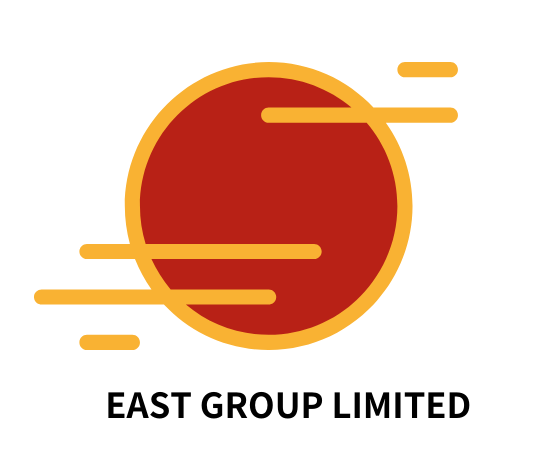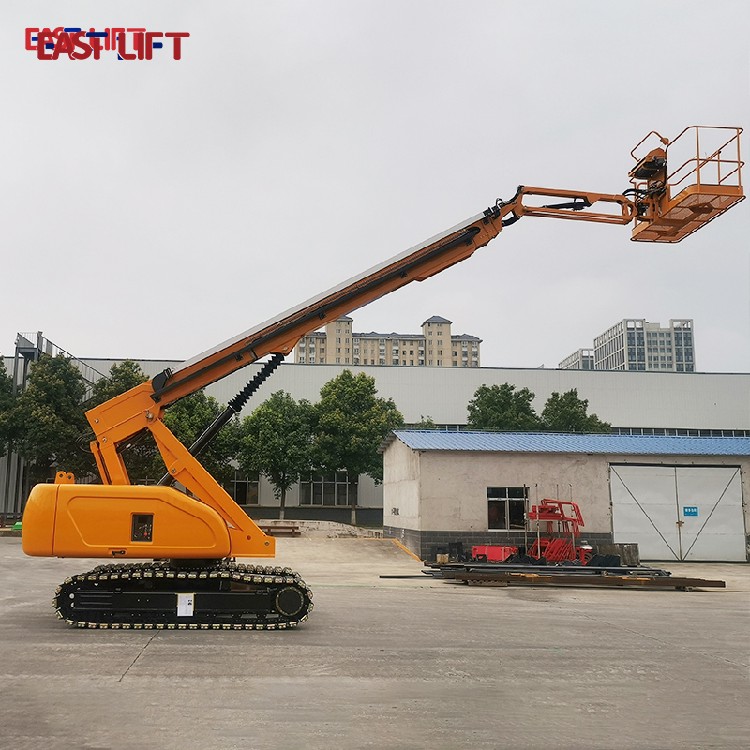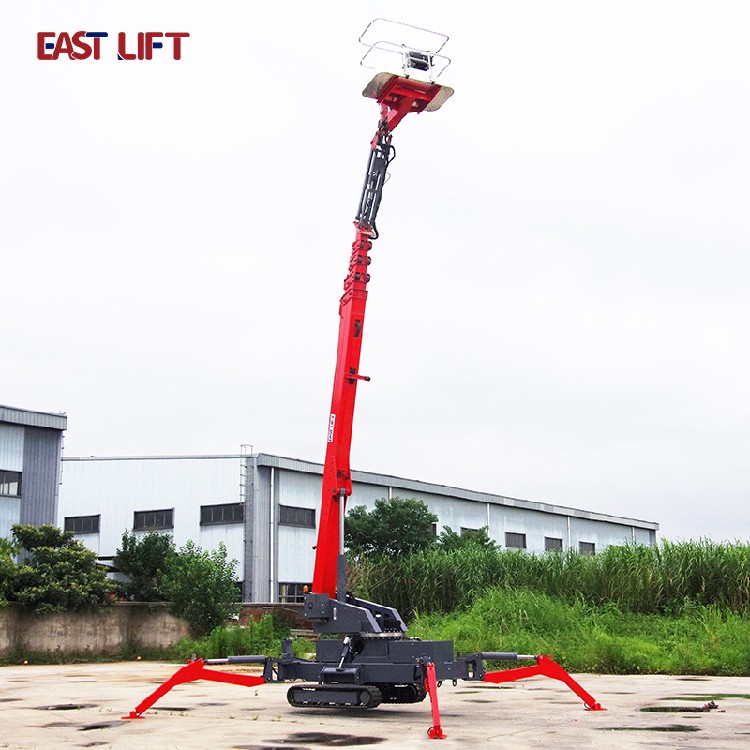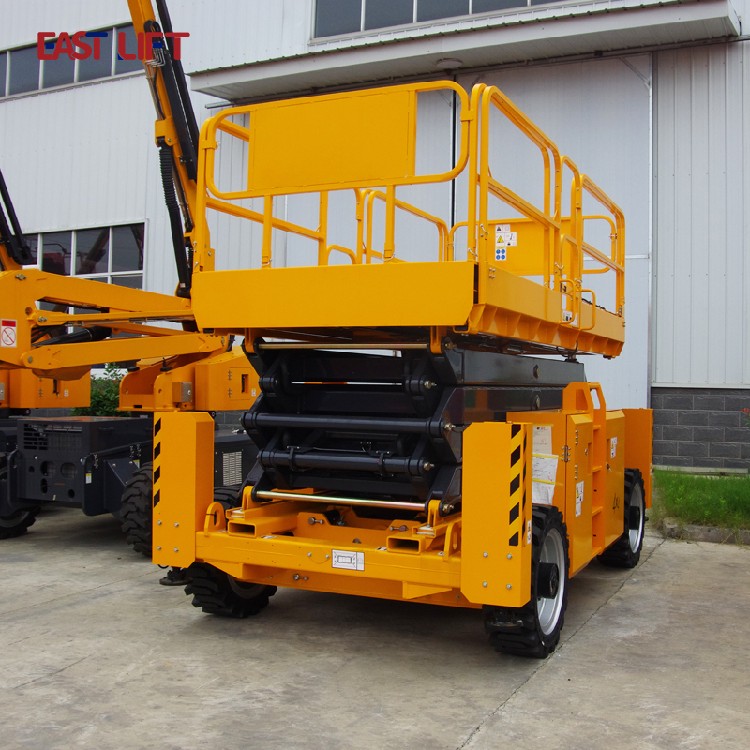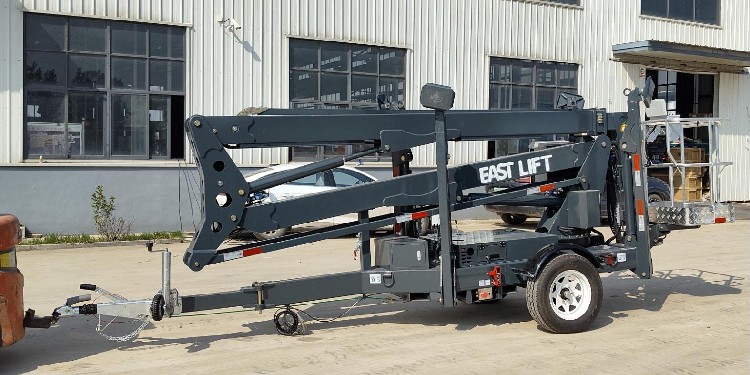Welcome!







Categories of Self-Propelled Scissor Cranes (Part 2)
Basic Info
| Load capacity of extended platform | 120kg | Platform height,max | 12m | Platform load capacity | 380kg |
|---|---|---|---|---|---|
| Weight | 4750kg | Working height,max | 14m | ||
Product Description
In the previous article, we learned that scissor lifts are classified into mobile and stationary types based on their mobility and power drive, as well as diesel, electric, and hydraulic drives. Today, we will learn about other classifications of scissor lifts.
Customized feature extension
In addition to the mainstream categories mentioned above, scissor lift platforms have also developed customized categories such as off-road scissor lifts and tracked scissor lifts for special working environments to meet the needs of complex working conditions.
Off-road scissor lift aerial work platform
These platforms are mostly equipped with diesel power, with some electric versions also available. They use off-road tires, have a high ground clearance, and offer excellent climbing and bump resistance. Unlike ordinary mobile platforms, they can easily handle complex terrains such as uneven surfaces and gravel areas. Suitable applications include construction sites for suburban factories, rural road lighting projects, and maintenance of high-altitude facilities in scenic areas. Off-road scissor lift platforms can maneuver flexibly to overcome the challenges of uneven terrain that ordinary platforms struggle to handle.
Tracked electric scissor lift aerial work platform
Tracked electric scissor lifts are a relatively niche category, replacing traditional wheels with tracks to increase the ground contact area and reduce pressure. Their core advantage is their ability to operate on soft ground, while also possessing the environmentally friendly and quiet characteristics of electric equipment. In scenarios such as garden pruning, wetland facility maintenance, and the initial setup of muddy construction sites, tracked electric scissor lift platforms can avoid damaging the ground while ensuring stability during high-altitude operations, filling the gap in the operation of ordinary platforms on soft terrain.
Classified by working height
From a height perspective, this classification method focuses on the requirements of working height, enabling quick matching of different high and low-altitude work scenarios, and is an important reference dimension for enterprises when selecting equipment. First, there are low-altitude scissor lift platforms, with a working height typically below 6 meters. They are generally small in size, mostly electric mini models, suitable for delicate indoor work such as the maintenance of small machine room equipment, allowing for flexible movement without taking up much space. Second, there are mid-to-high-altitude scissor lift platforms, with heights generally between 6 and 15 meters. These scissor lifts cater to both indoor and outdoor work needs, and are commonly used for tasks such as ceiling repairs in shopping malls, thus balancing flexibility and working range. Third, there are ultra-high-altitude scissor lift platforms, with heights exceeding 15 meters. These feature a stable chassis and reinforced scissor lift structure, suitable for construction in high-rise buildings, high-altitude lighting installation in large venues, etc. However, these scissor lifts have higher requirements for ground weight capacity and operating wind speed.
Classification by platform structure
The platform structure directly affects the stability and space adaptability of the equipment, resulting in two distinct categories. One is the single-column scissor lift platform, characterized by its streamlined structure, small footprint, and single scissor lift unit supported by a column. It is suitable for operations in narrow aisles and for tasks such as adjusting overhead shelving in small shops. The other is the double-column scissor lift platform, employing a symmetrical layout of two scissor lift units reinforced with double columns. Its stability and load-bearing capacity far exceed those of the single-column scissor lift platform. It is commonly used in large factories for heavy equipment installation and other work scenarios requiring multiple people to collaborate and carry tools.
Diesel-powered scissor lift aerial work platform
Diesel-powered scissor lifts are primarily designed for complex outdoor environments, especially off-road scissor lifts, which often utilize diesel power. These platforms offer strong power, excellent climbing ability, and can handle the rugged terrain of outdoor construction sites. They are suitable for exterior wall construction on building sites, equipment maintenance in mines, and similar applications. Because they are diesel-powered, there is no concern about running out of electricity, and they produce noise and exhaust fumes, making them unsuitable for indoor work.
Conclusion
Different types of scissor lifts are designed to suit different work scenarios. Fixed scissor lifts are suitable for long-term, fixed-point transport of heavy objects, mobile scissor lifts meet the need for flexible relocation, electrically driven scissor lifts are suitable for indoor operations, and off-road scissor lifts are suitable for tackling complex terrain challenges. Therefore, when selecting a model, multiple factors should be considered to determine the appropriate scissor lift for efficient operation.
Recommended Products
Recently Viewed
Contact Us
Shandong Xusheng Machinery Technology Group Co., Ltd.
